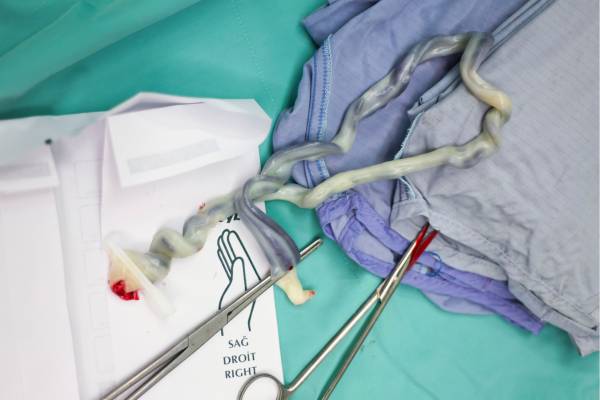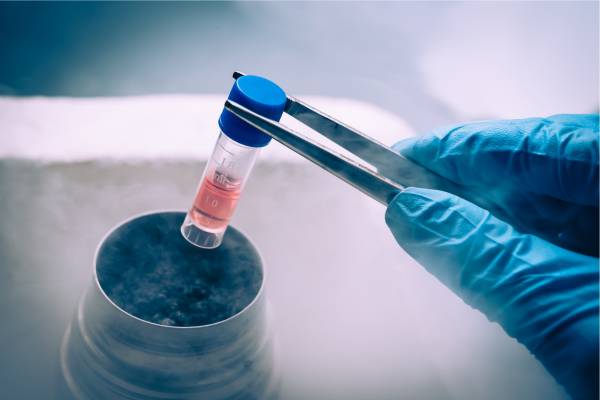Mesenchymal stem cells derived from the umbilical cord (UC-MSCs) have become a leading option for cell-based therapies, offering numerous advantages over other stem cell sources. Here’s why umbilical cord stem cells are considered the best option.
Umbilical cord stem cells are immature hematopoietic cells. Unlike mesenchymal or multipotent cells, which can differentiate into various cell types such as bone, cartilage, and connective tissue cells, hematopoietic progenitor cells have the ability to become red or white blood cells, platelets, brain cells, muscle cells, and other organ tissues.
Because of this, stem cells obtained from the umbilical cord can be used to treat severe conditions such as leukemia, tumors, heart disease, and more.

What Are Umbilical Cord Stem Cells?
Umbilical cord stem cells are collected from the blood remaining in the umbilical vein and placenta after a baby is born.
In the past, the placenta, umbilical cord, and the blood within them were considered medical waste. However, more parents today choose to preserve the umbilical cord as a valuable source of hematopoietic progenitor cells, which are used to treat a wide range of diseases.
Hematopoietic progenitor cells are known for their ability to proliferate, differentiate, and renew the cells of the tissues where they reside. This potential allows them to help reconstruct organs severely affected by congenital or acquired diseases such as lymphomas, leukemias, immunodeficiencies, and metabolic disorders.
Benefits of Umbilical Cord Stem Cells
The umbilical cord is a valuable source of hematopoietic stem cells with great potential for medical treatments. Here are some of the key benefits:
Strong Healing Properties
UC-MSCs are known for their potent healing capabilities. They release beneficial substances that help:
- Repair damaged tissues
- Regulate immune responses
- Reduce inflammation
These properties make UC-MSCs particularly effective in treating autoimmune diseases, joint issues, and injuries.
Biocompatibility
Cryopreservation of umbilical cord stem cells ensures biocompatibility for transplants, as they are obtained from the patient’s own blood. These cells are not only available for the individual but also for family members, significantly increasing the chances of successful transplantation due to genetic compatibility.
Potential to Treat Various Diseases
So far, umbilical cord stem cells have been used to treat around 80 medical conditions, including metabolic disorders, autoimmune diseases, and blood cancers.

Safety
The availability of umbilical cords ensures a stable and abundant supply of these valuable cells for clinical use.
Wide Range of Conditions Treated
Umbilical cord stem cells have shown promise in treating a variety of health conditions, including:
- Joint repair for damaged cartilage and tissues
- Cardiovascular diseases such as heart failure
- Neurological disorders including brain injuries and spinal cord injuries
- Autoimmune diseases such as lupus and arthritis
- Diabetes-related complications
Clinical trials and years of successful treatments, including those conducted at CRC, have demonstrated the positive impact of umbilical cord stem cells in regenerative medicine.
Methods for Extracting Stem Cells from the Umbilical Cord
Umbilical cord stem cells are collected from the blood within the cord, which is typically discarded after birth. This makes the collection process simple and non-invasive, unlike other sources such as bone marrow or adipose tissue, which require surgical procedures.
The collection process is safe and poses no risk to the baby or mother. The steps include:
- Informing medical staff of the desire to preserve the baby’s umbilical cord stem cells before birth.
- Clamping the umbilical cord immediately after delivery to prevent blood loss.
- Thoroughly disinfecting the remaining section of the umbilical cord attached to the placenta.
- Using a sterile needle to extract the blood rich in hematopoietic stem cells until the cord stops pulsating and blood flow ceases.
- Storing the collected blood in a special extraction bag with an anticoagulant and sealing it securely.
- Transporting the sample to a cryopreservation laboratory, where it is frozen with liquid nitrogen at -292°F to maintain its biological viability for decades.
Preserving umbilical cord stem cells is particularly beneficial for babies with a family history of blood disorders such as leukemia, lymphoma, anemia, autoimmune diseases, and metabolic conditions.
How to Store Umbilical Cord Stem Cells
Parents who choose to store their baby’s umbilical cord stem cells have two options:
- Private Cord Blood Banks: These banks store umbilical cord blood exclusively for the donor family’s future use. They require an annual or monthly fee to ensure the availability of stem cells for potential medical treatments.
- Public Cord Blood Banks: These banks accept umbilical cord donations for public use, making the stem cells available to anyone in need. However, compatibility testing is required, and finding a suitable match for treatments can be challenging.
Public stem cell banks have been used for decades in clinical research to develop effective treatments for conditions that are difficult to treat with conventional medicine.
Stem cell treatments are part of regenerative medicine, an innovative field that aims to repair damaged tissues and stimulate the body’s natural ability to heal itself.

Why Choose Umbilical Cord Stem Cells?
In summary, umbilical cord-derived stem cells are an excellent option for stem cell therapy due to their easy collection, rapid growth, strong healing properties, and effectiveness in treating various health conditions. This therapy is shaping the future of medicine, offering hope to many patients facing serious health challenges or those simply looking to enhance their overall well-being.
At CRC, we offer advanced treatments such as stem cell therapy for hair loss, back pain, and knee issues, helping patients regain mobility and improve their quality of life. Additionally, our innovative approach includes stem cell therapy for rheumatoid arthritis, providing new hope for individuals suffering from chronic joint pain.
If you’re interested in learning more about how stem cell therapy can benefit you, contact CRC Clinic today. Our specialists are ready to guide you toward the best treatment options tailored to your needs.
Sources:
https://biotech-spain.com/es/articles/c-lulas-madre-del-cord-n-umbilical-c-mo-se-extraen-/
https://www.quironsalud.com/embarazoymaternidad/es/servicios/parto/preservacion-celulas-madre-cordon-umbilical
https://www.cryo-cell.com/cord-blood-treating-diseases-es


